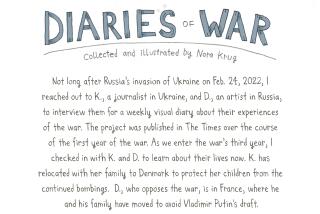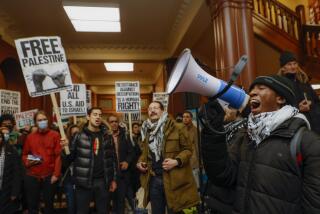‘Signs of Resistance’ celebrates the history of American protest art
“People used the weapons they had at their disposal,” writes Bonnie Siegler in her book “Signs of Resistance: A Visual History of Protest in America. “Paper and pen.”
Created “by artists, designers, and everyday men, women, and children (!) who might not have had a lot of creative background but certainly had a lot to say,” the posters, broadsides and other protest art collected in “Signs of Resistance” are pointed and stark, or bitingly humorous, and share a purpose: to convey a message of dissent.
Taken together, Siegler writes, they form “a collection of visual expressions of the resistance throughout American history.”
Siegler, a graphic designer, began compiling the images after the 2016 presidential election, “uncovering protest art that was so compelling, so inspiring, it stirred something in me decades, even centuries later.” Organized chronologically, “Signs of Resistance” features protest art from the 18th century to 2017.
The book begins with notices posted in Boston in 1765 protesting the Stamp Act and marking America’s disintegrating relationship with Great Britain, and proceeds through the 2017 Women’s March, which filled streets across the world — and Facebook and Instagram feeds — with scores of pink-hatted marchers brandishing inventive, homemade posters expressing outrage with the new president. These examples may be more than 250 years apart, but in short, but illuminating captions, Siegler traces their linage.
American icons like Uncle Sam and Rosie the Riveter reappear across decades, but “Signs of Resistance” contains other, oblique echoes too. A graphic image made by the Berkeley Political Poster Workshop in 1970 protesting the Vietnam War asks: “Your son next?” Half a century later, two children at a march in Minnesota for Trayvon Martin hold homemade signs attached to popsicle sticks that read, “Am I next?”
The means by which protest art conveys its message — with directness and economy — accounts for part of its potency. In the 1930s, the NAACP hung a flag outside its New York offices every time news was received of a lynching. The flag’s design — bold, uncluttered text — reflects that “they had only a moment to capture the attention of drivers or walkers” and make an impact. Conversely, a wordless poster made after 2017’s violent rally in Charlottesville, Va., “shows the Klan lurking behind the American Flag.”
The rich history of American protest art is the history of American wit too. A parody of the Trump campaign’s red Make America Great Again hat reads, “Make Racists Afraid Again,” and the president’s meeting with German Chancellor Angela Merkel spawned a frenzy of memes. “Memes are the new posters,” writes Siegler, “only they reach a lot more people a lot faster.” The revolution will be televised — and shared online.
“Signs of Resistance” includes the work of many movements — woman’s suffrage, civil rights, Black Lives Matter — but the creativity and conviction behind each image are a common thread. “Every protest image was made because someone felt compelled to act out of a belief in what they felt was right.”
More to Read
Sign up for our Book Club newsletter
Get the latest news, events and more from the Los Angeles Times Book Club, and help us get L.A. reading and talking.
You may occasionally receive promotional content from the Los Angeles Times.







